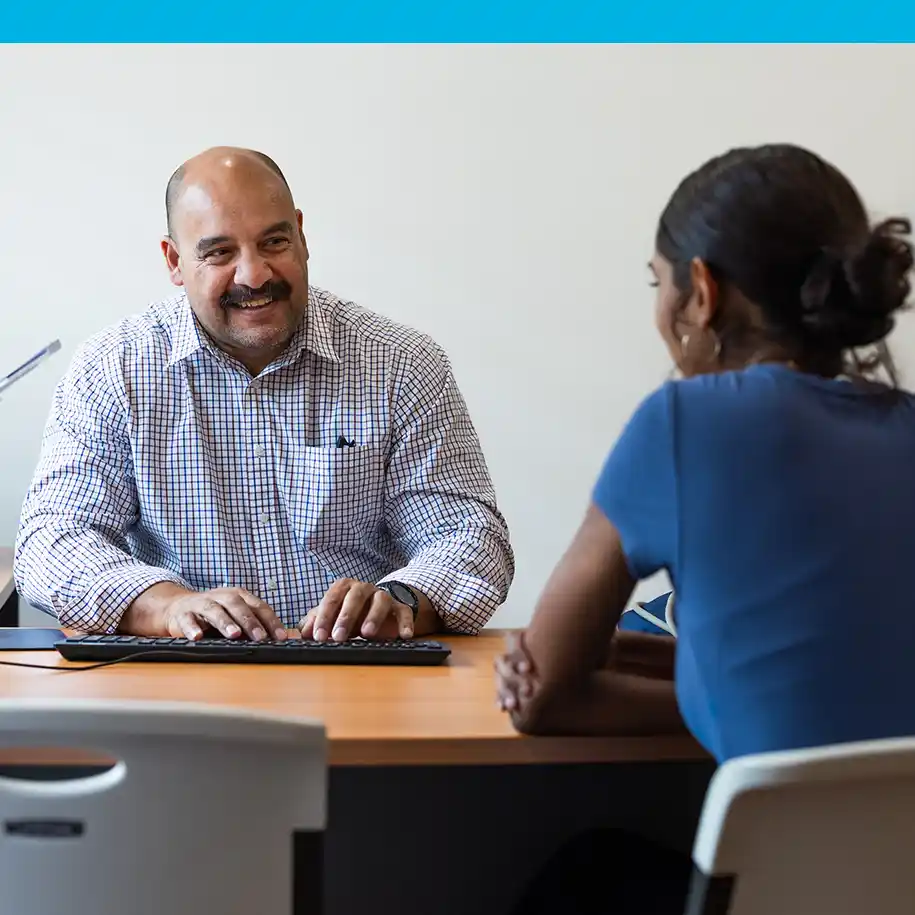
Proven ways to help your adult learners re-engage and succeed — while strengthening your institution
Investing in adult learners now is an investment in a better future for everyone
For all the uncertainty in higher education these days, one thing is certain: the adult learner population is significant — and growing. With adult learners currently comprising nearly one-third of the postsecondary student population and generating more than 40% of total higher ed revenue, colleges and universities are wise to focus on this burgeoning population of scholars. That includes the 43 million Americans who fall into the “some college, no credential” (SCNC) category.
As institutions across the country shift their focus — and limited resources — to this growing learner population, they must be smart about how they attract, address and cater to their needs. If leaders in higher education can approach adult learner re-engagement from a holistic perspective — thinking beyond re-enrollment to how they could best offer support all the way to completion — they will benefit their students, their institutions and their communities at large. After all, successful re-entry puts students on the path to economic and social mobility, fuels workforce readiness for communities, and strengthens institutions. That’s well worth the investment in prioritizing adult learners.
See how one adult learner turned his lofty goals into his new reality.
Ensuring your institution is return-ready
Part of helping SCNC learners to return to the classroom, on campus or online, will be convincing them that this time will be different — and doing the upfront work necessary to make it so. Once an institution has elected to invest in adult learner re-entry, they need to ensure that these students won’t be returning to face the same barriers that contributed to their decision to hit pause on their education in the first place.
So, how can you get your institution “return-ready”? Try starting with these proven best practices, which have been effective in setting adult learners up for re-entry success.
1. Simplify, streamline, validate: Re-enrollment policy and process shifts that work wonders
Complicated admission processes and punitive policies are a quick way to lose the very population you’re courting: busy, often overburdened adult learners. Simplify re-enrollment for them with policies like rolling admissions, streamlined transcript/credit evaluation and flexible readmission deadlines. Did they serve in the military or earn any certifications through work? Offer credit for prior learning or training to validate their professional experience, military service and credentials. While you’re at it, review institutional rules and eliminate any “gotchas,” such as financial holds for small unpaid balances, rigid prerequisites or “all-or-nothing” course loads.
2. Promote culture and belonging: Tangible, visible ways to be inclusive
Persisting and thriving in school has a great deal to do with feeling connected to the institution. Ensure that adult learners have someone assigned to them from day one — like a success coach — who can connect them to campus resources. Train staff and faculty to normalize diverse paths and highlight the benefits of returning to school after a pause. Statements like “You’re not behind; you’re bringing valuable life experience” underscore the sentiment. Also, make your commitment to SCNC learners abundantly clear on all school-related content. Webpages, PR, reports, policies, leadership statements and the like should specifically highlight adult learners.
3. Design for flexibility: Learning and support options that fit many schedules
Adult returners, most of whom are weaving their educational commitments into a packed schedule, stand the best chance of persisting when they have options beyond traditional class times. This means offering weekend, evening, hybrid and online courses. Competency-based or modular learning for learners who can accelerate on their own timeframe also help to accommodate adult learners. Along with courses, these learners benefit greatly from flexible advising and tutoring support with availability after hours and throughout weekends.
4. Tap into frontline staff expertise to uncover re-enrollment pain points
Don’t underestimate the valuable insights your advisors and success coaches hold when it comes to your students’ pain points and barriers. Working closely with these students to provide personalized support, these frontline staff can identify and understand the prior challenges and obstacles learners faced that contributed to stopout. For instance, InsideTrack re-enrollment coaches take note of student stopout reasons, from family obligations to medical problems to scheduling issues. They also report on institutional barriers, from confusing financial information and lack of guidance about required courses to issues with faculty and staff, and so on. Coaches can offer institutions a nuanced understanding of SCNC learners’ lived experiences, which schools can then utilize to improve their re-enrollment processes. Return-ready institutions not only improve their enrollment outcomes, but they also create ecosystems where adult learners can complete degrees that unlock upward mobility and contribute directly to workforce needs.
Sending the right message
Schools also need to be mindful of the language they’re using to draw in and reassure SCNC students that “we see you and can help you.” In order to resonate, messaging to adult learners needs to reflect their values and their stage in life, which means it cannot be the same as messaging used for college-bound 18-year-olds. Any outreach to adult learners should speak to reasons they would benefit from completing their education, underscoring the career relevance and life impact of a degree and/or credential. Adult learners want to hear how returning to school positions them for advancement, stability and greater opportunity. They can do that by focusing on:
Tone and language:
- Choose phrasing that offers encouragement and possibility rather than deficit (see examples below)
- Showcase student stories of perseverance and success to demonstrate that other students like them have returned and completed their degrees
Practical information prominently placed:
- Clearly state cost and time commitment
- Include easy-to-find info on credit transfer, financial aid and class formats
- Provide a transparent, step-by-step “returning student pathway”
- Connect education to career outcomes with language linking education to improved economic mobility, new career opportunities and better job security
Proper outreach channels:
- Make sure you’re using multi-channel outreach, from texts and emails to phone and video calls — a recent evaluation of our CA Reconnect partnership showed that initiating connection via different outreach methods casts a much wider net, ensuring accessibility to former students detached from their college or university
- Focus your outreach efforts on the places adults spend time, such as employer HR portals, LinkedIn, community organizations, places of worship, local radio, etc.
- Partner with employers for tuition assistance campaigns, a boon to both the student and the institution they’re attending
Language matters
Here are some examples of how you can modify your messaging to encourage and uplift adult learners:
1. Instead of: “It’s never too late to finish what you started. Apply now to get back on track.” Try: “Pick up where you left off — with flexible options that fit your life today. Let’s find the best path forward together.”
Why it works: Shifts from judgmental (“finish what you started”) to affirming (“fit your life today”), while emphasizing flexibility.
2. Instead of: “Students must complete the FAFSA to determine eligibility for aid. Contact the financial aid office with questions.” Try: “Worried about cost? We’ll walk you through your options — from financial aid and scholarships to employer tuition benefits. Most adult students pay less than they expect. Let’s talk about what’s possible for you.”
Why it works: Uses approachable language, acknowledges specific concerns of adult learners, and offers support instead of a bureaucratic directive.
3. Instead of: Using a photo of young students on campus with the caption: “Start your future today.” Try: Using a photo of a parent studying at a kitchen table with a child beside them with the caption: “Your goals matter, too. Flexible degrees designed for working adults.”
Why it works: Proactive, relational support replaces a reactive, transactional frame.
Holistic support tailored to adult learner success
Holistic, wraparound support ultimately helps adult learners not just re-enroll, but feel capable of earning their degree or credential. With the support to stay on track and persevere, learners also build valuable knowledge, skills and beliefs (KSBs) that will serve them throughout their lives. This support has proven critical in keeping them from stopping out again. The end result? The students persist and earn their credentials while their schools see higher retention and completion rates.
Wraparound services should be designed to help adult learners find their educational footing while managing their jobs, families and lives. This could mean providing academic support, such as refresher courses (for math, writing, tech skills) and bridge programs for students returning after long absences; financial support, such as guidance through dedicated adult learner financial aid advisors and emergency grants for short-term crises (like InsideTrack’s Crisis Support Services microgrants); and life and social supports that range from childcare partnerships, transportation vouchers, and food security programs to peer communities (adult learner student groups, online forums) and peer mentorship programs. Mental health resources are also a key component of holistic support.
Ideally, wraparound support also involves learner advising and coaching. Proactive, personalized success coaches can act as a guide, an advocate, a main point of contact — someone who checks in regularly with learners to make sure they’re managing well and who can connect them to institutional resources, whether on campus or online. The goal is to catch issues before they become obstacles and sort out problems before they become crises. For schools partnering with InsideTrack, we provide direct, one-on-one coaching or train in-house staff in our methodology through our Coaching Development and Training programs. And when the coaching and advising is career-aligned, students can see the link between their current coursework and future goals, reminding them of why they returned to school. This helps keep them moving toward the finish line, even during tough times.
An investment for a better future
The bottom line? Prioritizing re-entry serves both mission and margin. Supporting adult learners aligns with many schools’ commitment to advancing equity and opportunity, while at the same time ensuring financial sustainability for institutions that need stability more than ever. While it’s critical for institutions to provide immediate, wraparound support for their incoming students, they must also reimagine systems to drive long-term impact. Policies, messaging and student support must be intentionally designed around adult learners’ lived realities, not retrofitted onto traditional models.
As Ruth Bauer, president of InsideTrack, said, “There are millions of talented, and often highly motivated, individuals in our communities who are near the finish line of not only earning a degree, but the prospect of a markedly better life and economic prospects. This is about creating pathways to possibility for Americans who are currently locked out of economic opportunity.”
Want to learn more about how you can help stopped-out students re-enroll — and persist through completion?
Coaching solutions proven to advance all learners
Whether you’re looking to help students persist through completion or to improve career outcomes for job seekers and employees, our holistic coaching solutions can help you achieve meaningful outcomes.



